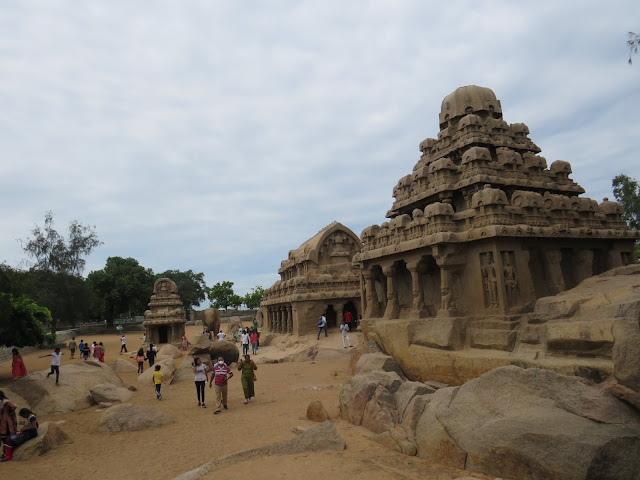Draupadi Ratha - Mamallapuram

If I miss the Five Ratha Complex and still claim to have visited Mamallapuram , people might literally laugh at me. Yes! It is one of the most picturesque and famous monuments of the heritage-rich town. My previous post in this blog gives a detailed introduction to Five Rathas. As it is a series of articles, if you have not yet read that, please access this link and go through the content. - Five Rathas in Mamallapuram This article exclusively covers Draupdai Ratha alone. I will continue to cover the other four Rathas in my subsequent posts. (Note: I wrote about most of the monuments in Mamallapuram about ten years ago in my blog. This series of articles is my attempt to provide much detailed coverage on all aspects of Pandava Rathas.) Draupadi Ratha is the smallest shrine in the Pancha Ratha Complex. The west-facing structure is the first temple on the premises and is located in the northern end. Its superstructure (vimana) resembles a hut with a conical roof. This particular styl







